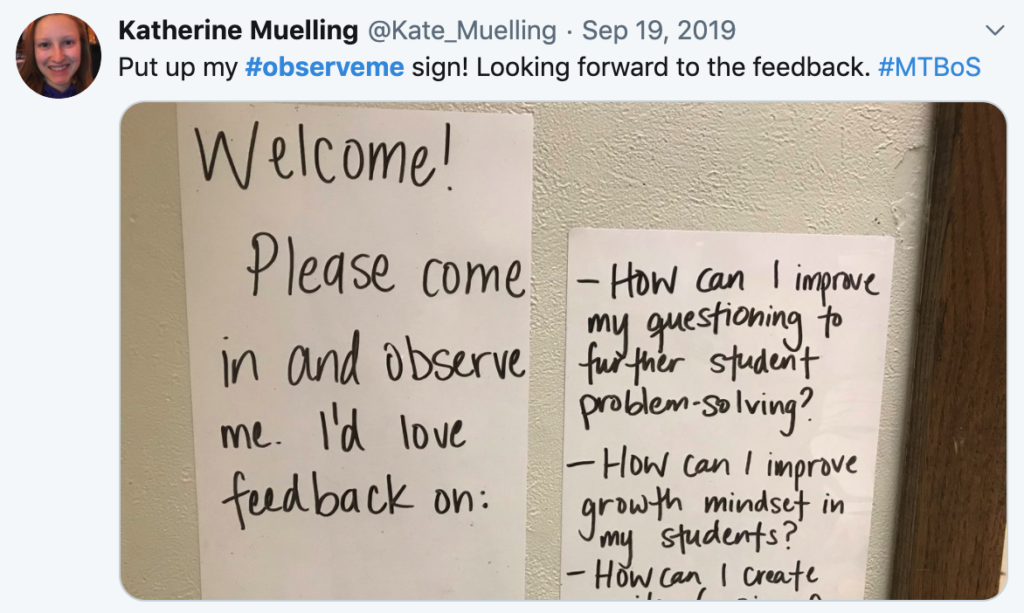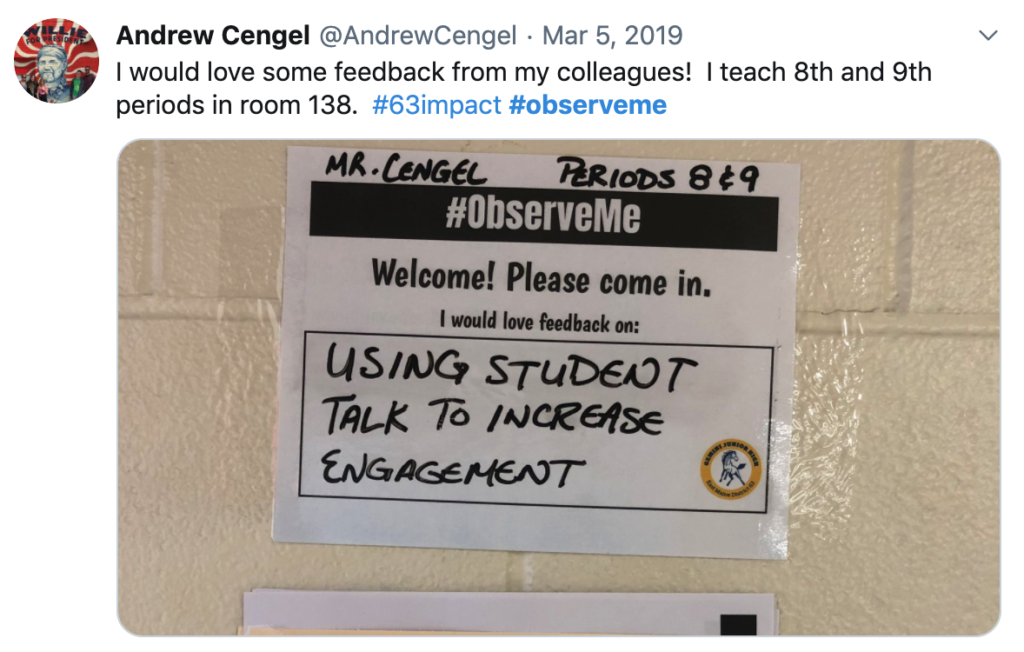I remember several years ago walking the hallways of schools where teachers had put signs outside their doors telling other teachers what goals they were working toward; they invited the other teachers to come into their classrooms to observe and leave feedback. The Twitter hashtag #observeme was filled with teachers posting their goals and became quite a movement emphasizing the benefits of peer learning.
Trying something new 🙃 #observeme pic.twitter.com/8eY8DLq75r
— Jessica Andaya (@ms_jess_aye) January 13, 2020
As a virtual coach, the exciting thing to me was that this type of learning did not have to be bound to the physical school building. In fact, video-based coaching offers even more opportunities for teachers to learn from peers because they are not restricted by only being able to visit other classes during planning periods or having to get someone to cover their classes while they observe in another room.
As teachers learn to navigate and utilize online and remote environments, the need to learn from and lean on peers is even more necessary because many of them are engaging in unfamiliar arenas of lesson design or experimenting with transitioning traditional practices to new environments. No matter the context in which the instruction occurs, coaches have the opportunity to connect teachers through the power of video and create a space that is safe for sharing and growing from one another. To accelerate this culture of learning and sharing, consider these tips for scaffolding video-based peer coaching:
- Look for and connect strengths. As the coach, I get to see all of the videos that my teachers upload because they share them with me for feedback. This allows me to note videos that represent some aspect of instruction really well. When I notice a great example, I put it in a collection folder. When I am talking to another teacher that may need support in this area, I might suggest that they contact Mrs. X and ask if she would share the video where she ____ because it was a great example of ____. I become the connector, not the driver of the interaction. I’m letting them know that there is a resource available to them, and that resource is a peer. That awareness becomes the first step in building the culture of learning from peers.
- Create sharing partners. Once the teachers have indicated that they are more comfortable with sharing their videos with me and start talking about wanting to see others, I will create sharing partners. These will be two teachers that share their videos with each other prior to sharing them with me. I may give them a viewing guide of questions to consider when watching each others’ videos or leave it open. This helps to create a sense of trust among the teachers and builds collegial relationships that may not have the chance to form in other circumstances. At first the partners may just watch and support each other through positive comments, but eventually I will provide guidance and some tools to help them provide productive feedback to each other.
- Use sharing circles and groups. When teachers become adept at sharing and giving feedback with a partner, sharing circles can be a great next step. Teachers might be grouped according to goals, grade levels, subject area, or at random. To begin, you might team up two pairs of sharing partners. Because the pairs already know at least one person in the group, it may accelerate the trust and intimacy within the sharing circle. In these groups, teachers first watch and reflect on their own videos then share them with their group and ask for feedback in 1-2 specific areas. Group members focus their viewing and feedback on the areas specified.
- Create opportunities for whole group sharing. As teachers gain familiarity with giving and sharing feedback and the process of recording themselves becomes less intimidating, it is a great time to facilitate ways for them to share their teaching with the whole group. Maybe teachers put 2-3 of the videos that they think best represent their growth into a collection and share the collection with the group. Perhaps they collaborate with their sharing circles and pick some exemplars to add to a group exemplar collection. Eventually, maybe they will be comfortable enough to just share a less than stellar video with the group and ask for suggestions or feedback. Getting to this point will take time, but it can be incredibly powerful.
The willingness and desire to actively learn from and seek the feedback of peers is a hallmark of collegial school cultures. This type of culture of sharing and learning from colleagues can be accelerated when coaches maximize the power of video and use purposeful scaffolds to build trust among peers.






